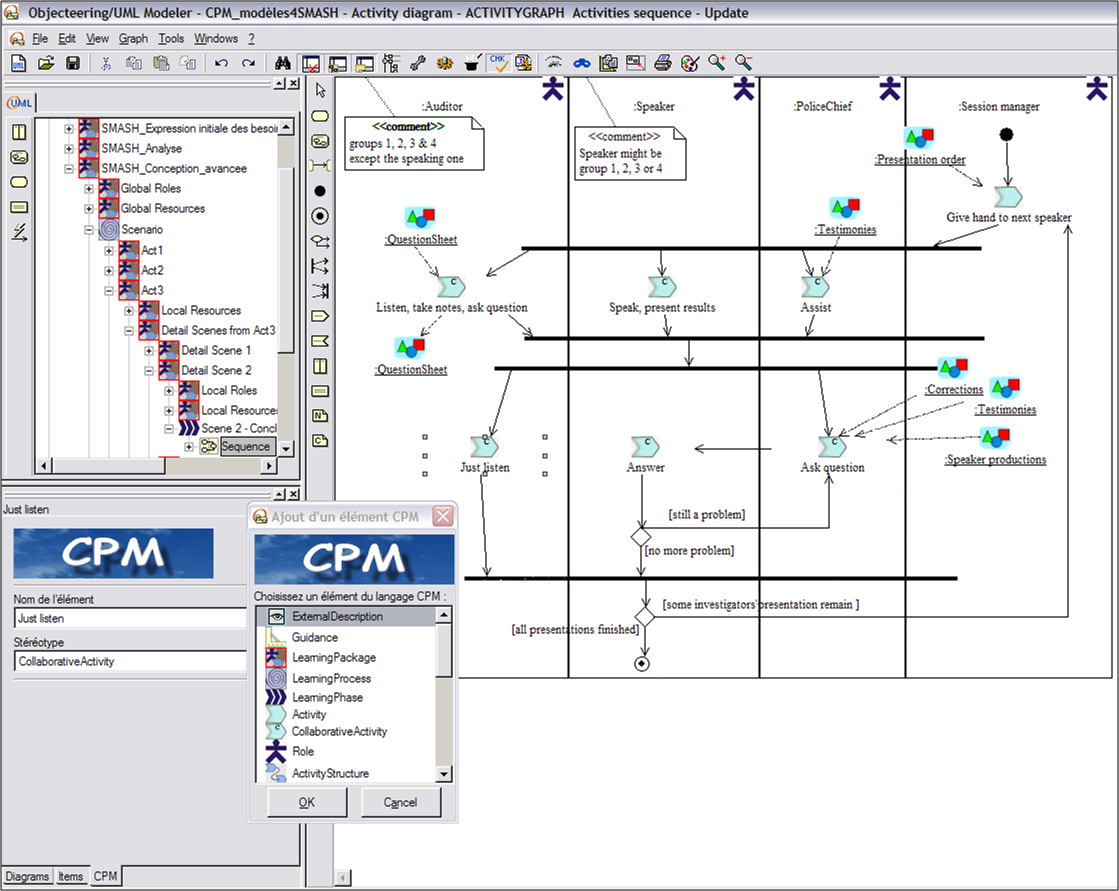CPM
Definition
CPM was developed by Pierre Laforcade and others in the context of a PHD thesis.
“Within the industrial context of e-learning, Educational Modeling languages (EML) aim in essence to describe the content and process within "units of learning" in order to support reuse and interoperability. These languages emphasize the formal specification of models called scenarios. We present in this paper our research results about the proposition of a UML-based modeling language dedicated to Problem-Based Learning design. The CPM (Co-operative PROBLEM-BASED LEARNING Metamodel) language successes in providing a rich-graphical formalism to designers/authors of PBL. Our contribution covers the instructional design process from initial requirements step to design step upstream EMLs. Thanks to a binding mechanism provided when using dedicated tools, the CPM language finally conforms to the EML definition.” ([Laforcade, 2005: Abstract]).

Software
CPM was a research system.
CPM is implemented a module for the free-of-charge UML CASE-tool Objecteering.
- Dowload
You can download from Thierry's home page.
Links
- Homepage Laforcade (includes publications, etc. Some online).
- PPT presentation slides
Bibliography
- Laforcade, P. (2005). Towards a UML-Based Educational Modeling Language, Advanced Learning Technologies, 2005. ICALT 2005. Fifth IEEE International Conference, pp. 855-859. Abstract/Citeulike. ISBN 0-7695-2338-2
- Laforcade, Pierre; Thierry Nodenot, Christian Sallaberry (2005). Un langage de modélisation pédagogique basé sur UML. STICEF vol. 12. Abstract/HTML/PDF
- Laforcade, Pierre (2005). Méta-modélisation UML pour la conception et la mise en oeuvre de situations-problèmes coopératives, Thèse de doctorat de l'Université de Pau et des pays de l'Adour, Le mémoire de thèse (PDF [8Mo)]
- Laforcade P., Nodenot T., Choquet C., Caron P.-A., (2007), Model-Driven Engineering (MDE) and Model-Driven Architecture (MDA) applied to the Modelling and Deployment of Technology Enhanced Learning (TEL) Systems: promises, challenges and issues. In: Architecture Solutions for E-Learning Systems, p. 116-136, Edité par Claus Pahl, ISBN 978-159904633-4.
- Nodenot, Thierry; Pierre Laforcade, Xavier Lepallec (2007). Visual Design of coherent Technology-Enhanced Learning Systems: a few lessons learned from CPM language, in
- Laforcade Pierre (2007). Visualization of Learning Scenarios with UML4LD, Journal of Learning Design, Vol. 2, Num. 2 Page : 31-42